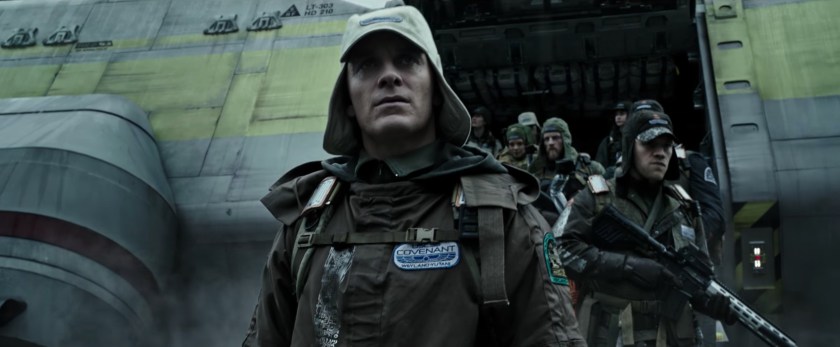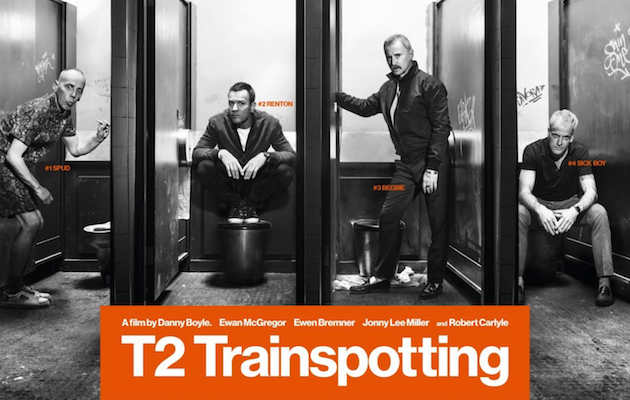
Another year, another Star Wars film. And with the recent release of The Last Jedi, the internet is ablaze with fury. I’m sure you’ve all seen the user scores on review aggregate sites that are completely at odds with the high scores from professional critics. And Rian Johnson is probably the most hated person on the planet right now. But how is the movie? Let’s find out.
The Last Jedi starts where The Force Awakens left off, with Rey (Daisy Ridley) finding Luke Skywalker (Mark Hammil) on a remote planet and the rebellion are on their last legs being chased by the First Order. In the opening sequence of the film, we have a dazzling space battle where the high risk heroics of hot shot Poe Dameron (Oscar Isaac) takes centre state. It is an exciting sequence, but it also has some out of place humour with what is essentially a prank call. It is a very odd way to open a Star Wars film, but after that, the rest of the opening sequence is excellent.
With the humour of the film in general, it is very hit and miss. The jokes don’t always land and can often be out of place. However, there are a few instances where the film got a genuine chuckle out of me, mostly with visual gags on the casino planet, Canto Bight, a wretched hive of scum and villainy filled with the space bourgeoisie, where a drunk little goblin tries to insert coins into BB-8. Or a scene when Luke chastises Rey for her first attempt at “reaching out” to the force. Hell, even the porgs have some funny moments. The best humour in the film comes from parts that flow organically from the situation, as opposed to Marvelesque quips that miss more than they hit.
In terms of the story, the core of the film with it’s three major plot threads being the resistance retreat, Rey’s training/Punished Luke and the connection between Rey and Kylo Ren (Adam Driver). Much like in The Force Awakens, Adam Driver’s performance is excellent and Kylo Ren is the best new character in these films. In this film, he tries to break from trying to continue the legacy of Darth Vader and he want to “kill the past” and forge a new destiny in words that echo Kreia’s from Knights of the Old Republic 2. In other words, Kylo Ren is the active nihilist and overman-to-be, which is presented quite well here.
The mental connection that becomes established between Rey and Kylo Ren through the Force is wonderful and the heart of the film. It brings a much needed sense of intimacy and romance to the film in a way that feels genuine and not corny, unlike the B-plot romance between Finn and Rose. It is quite touching and helps to develop Rey and Ren very nicely. It allows us to see the hint of vulnerability in Rey and make her feel a bit more human instead of a character designed by Kathleen Kennedy and market researchers at Disney. However, despite her characterisation being better realised here than in the previous film, her character arc still feels muddled and like her development is by and large being skipped as her ability feels unearned. I want to like Rey, but it is difficult to connect.
In terms of Luke’s character, this is probably the most controversial aspect of the film and has divided audiences. Mark Hammil has even talked about he disagreed with this vision of Luke. Some fans have even described it as character assassination and say Luke would never do x because of his arc in Return of the Jedi. But this complaint feels like those who make it were so enraged by one aspect of this arc that they weren’t paying attention to the rest. Without going into spoilers, I will say simply that Luke’s arc, even though it could have been handled in a multitude of different ways, here it was handled well in spite of what hotheaded fanboys say. The complaints about Luke getting milk from the weird tapir thing seem like strange complaints to me and this moment is clearly a pleb filter. For Luke’s arc, I’m also going to invoke the in built defence that it is like poetry and every stanza rhymes with the last, which is not felt more strongly than when we see a binary sunset soon after an act of heroism.
For the resistance retreat plot thread, which focuses on Poe Dameron’s change from hot shot ace pilot to leader who learns the value of caution, which is portrayed primarily through his relationship with with Leia. Carrie Fisher delivers a touching performance (in spite of one scene that is kind of dumb; those who’ve seen the film know what I’m talking about) as Leia, the grandmotherly matriarch of the resistance. But we also have Admiral Holdo (Laura Dern) who is a purple haired condescending authority figure who fans have also complained about. But her attitude and behaviour, despite not having much logic in terms of the plot, nevertheless conforms well to how that kind of authority figure tends to act, so it wasn’t too bad. But since the last time I saw Laura Dern was her role as Diane in Twin Peaks: The Return, I half expected her to suddenly say “fuck you, Poe” and proceed to smoke cigarettes and drink from mini vodka bottles. This part of the story also brings us to the hyperspeed ram, which is one of the most visually dazzling moments in the film and is aesthetic perfection. However, it does complicate some of the underlying rules to the fiction of Star Wars to the point where hyperspeed ram becomes the Star Wars equivalent of why didn’t the eagles just fly the hobbits straight to Mordor?
In regards to the visuals and sound, those are all fantastic as always, especially the beautifully choreographed and shot fight scene in Snoke’s throne room that has so much red it reminded me of Suspiria despite these two films being totally different. The fights are entertaining to watch but don’t quite have the some punch and sense of weight like in The Force Awakens. Performances all round are excellent and Domnhall Gleeson, as well as Benicio Del Toro deliver wonderfully expressive portrayals as General Hux and the mercenary slicer, DJ.
There is plenty to talk about with the new Star Wars film, good and bad. The film is also two and a half hours and while I didn’t feel the run time (except for when I badly needed to use the bathroom), there are still parts of the film that could be trimmed or altered to make the film more cohesive and tightly paced. I should also add that I very much enjoyed the film while watching it, despite it’s issues. Other critics have also praised the film for subverting fan expectations and while the film does this, that is not in of itself a good thing and the limits are pushed here and luckily doesn’t fall into routine. It is a difficult tightrope to walk.
But while the film is enjoyable, good even, it is let down by unusual pacing, humour that doesn’t always hit the mark and interesting narrative direction that aren’t always fully capitalised on among the other things I’ve described. In short, it is a film with an excellent core that is let down by imperfect technical execution and the occasional questionable decision. While some critiques of the film are understandable, the vocal negative reaction to the film that claims it has “killed Star Wars” feel melodramatic and like barely disguised temper tantrums and/or nerd rage. The film fumbles at times, but it never drops the ball completely and Rian Johnson has delivered a film that is entertaining, engaging and establishes a fresh feeling of narrative possibility for the Star Wars franchise in the new canon.
6.5-7/10














